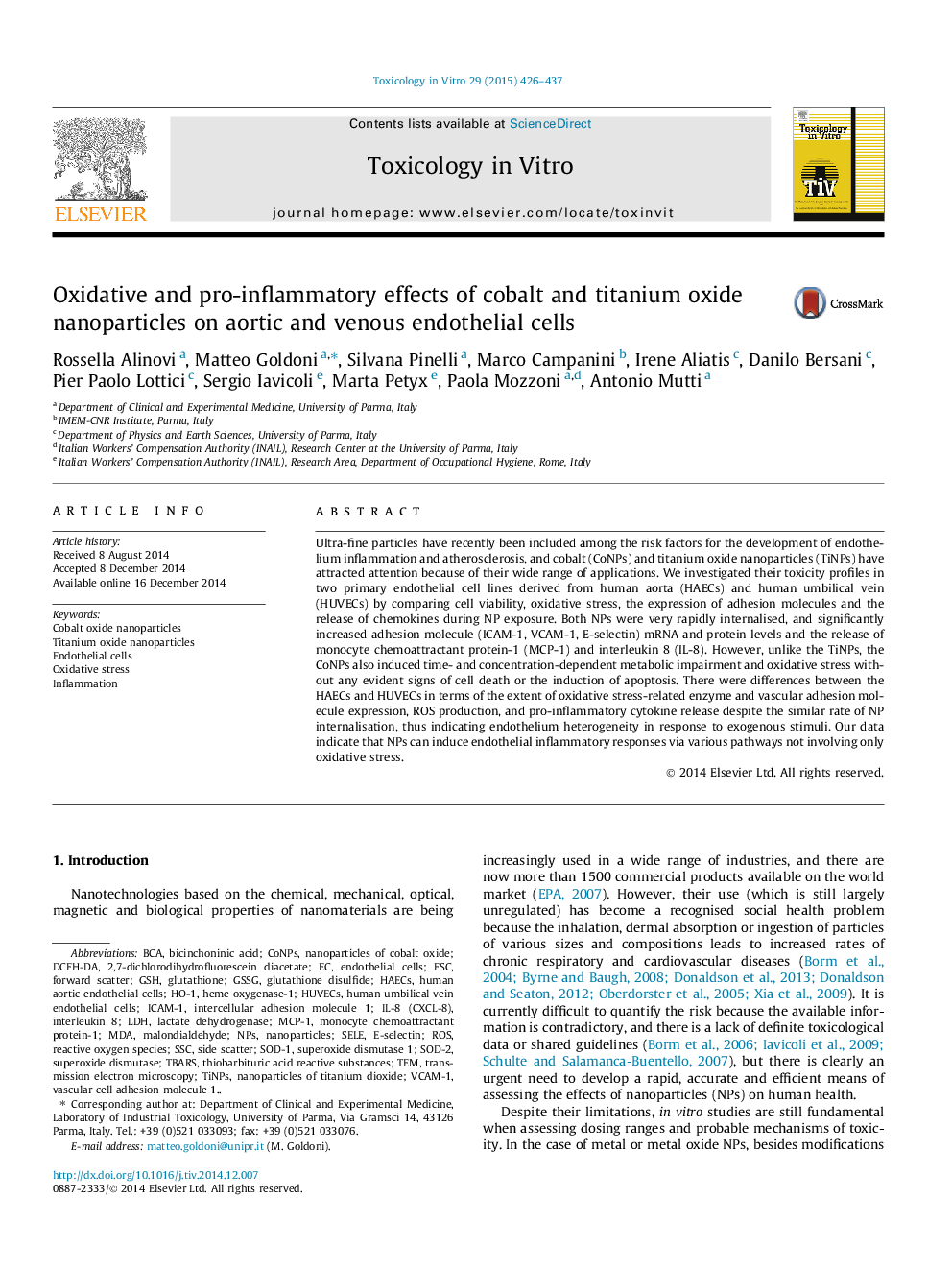| کد مقاله | کد نشریه | سال انتشار | مقاله انگلیسی | نسخه تمام متن |
|---|---|---|---|---|
| 2602479 | 1133762 | 2015 | 12 صفحه PDF | دانلود رایگان |
• Endothelial cells (HAEC–HUVEC) were exposed to Co3O4 and TiO2 Nanoparticles (NPs).
• CoNPs, but not TiNPs, caused metabolic impairment and oxidative stress.
• Both NPs induced over-expression of adhesion molecules and release of cytokines.
• Different vascular localization may explain heterogeneous cellular response.
Ultra-fine particles have recently been included among the risk factors for the development of endothelium inflammation and atherosclerosis, and cobalt (CoNPs) and titanium oxide nanoparticles (TiNPs) have attracted attention because of their wide range of applications. We investigated their toxicity profiles in two primary endothelial cell lines derived from human aorta (HAECs) and human umbilical vein (HUVECs) by comparing cell viability, oxidative stress, the expression of adhesion molecules and the release of chemokines during NP exposure. Both NPs were very rapidly internalised, and significantly increased adhesion molecule (ICAM-1, VCAM-1, E-selectin) mRNA and protein levels and the release of monocyte chemoattractant protein-1 (MCP-1) and interleukin 8 (IL-8). However, unlike the TiNPs, the CoNPs also induced time- and concentration-dependent metabolic impairment and oxidative stress without any evident signs of cell death or the induction of apoptosis. There were differences between the HAECs and HUVECs in terms of the extent of oxidative stress-related enzyme and vascular adhesion molecule expression, ROS production, and pro-inflammatory cytokine release despite the similar rate of NP internalisation, thus indicating endothelium heterogeneity in response to exogenous stimuli. Our data indicate that NPs can induce endothelial inflammatory responses via various pathways not involving only oxidative stress.
Figure optionsDownload as PowerPoint slide
Journal: Toxicology in Vitro - Volume 29, Issue 3, April 2015, Pages 426–437
